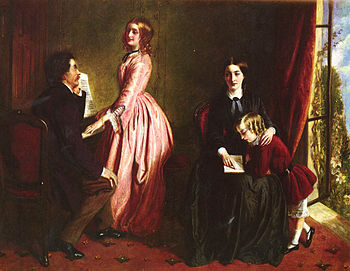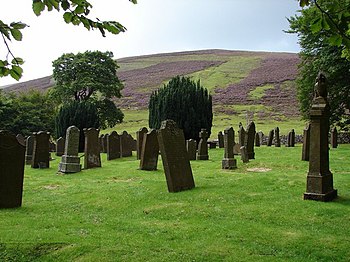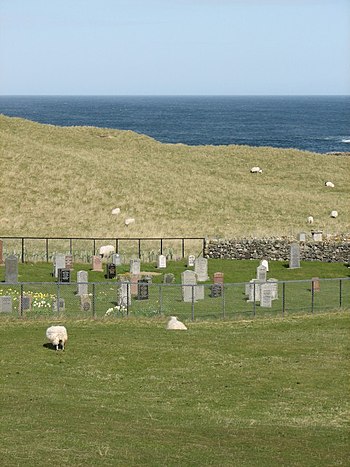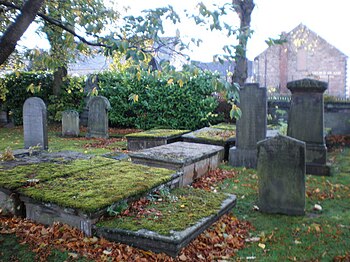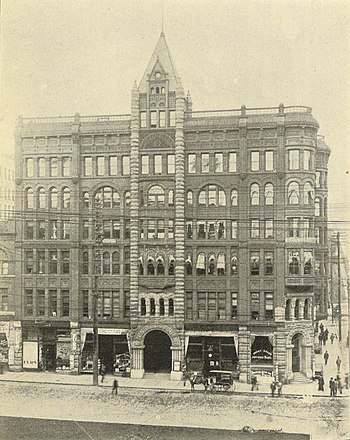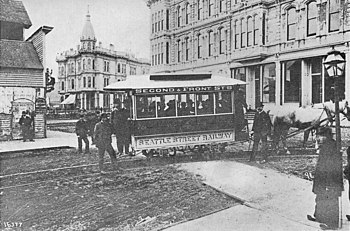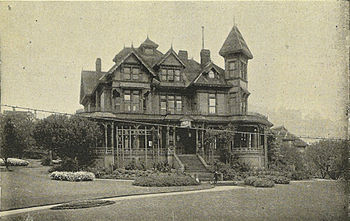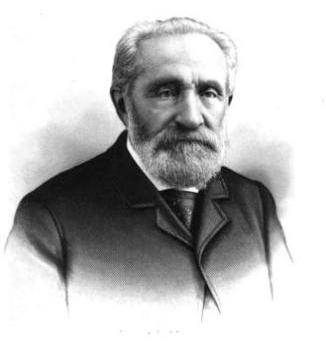Quaker Daughter to Wife of a Miami Indian Chief: Frances Slocum Historic Hoosier Legend

Old Stone fence near the orignal homestead of where Frances Slocum was born and stolen away from.
Source: Wikimedia Commons Generic Share Alike 2.0

Location that Frances Slocum was kidnapped from.
Source: public domain wikicommons
Historical Significance of Frances Slocum
Frances Slocum is one of Indiana’s more interesting historical legends. She was born at of the birth of a nation and managed to survive the worst nightmare of any post-colonist settler .Frances Slocum was never to really knew the relative peace and tranquility that life in eastern state could afford her .Frances bridged the gap between the world of early white settlement in the the Wabash Valley and the great Indian nations that lived there.
She saw the tragedy brought by the conflict of the two cultures. Frances Slocum saw the rapid downfall of the proud tribal people she had grown to love as her own. It was a that life captured the imagination of whites in the eastren states. Frances helped many liberal minded folks in the Wabash Valley have a better appreciation of their native neighbors.
Little Turtle Public Domain
This unfortunately was not enough to unseal the tragic fate that awaited her beloved Miami Indians. Yet, it is through the lens of life of Frances Slocum, that we are inclined to remember the great Delaware and Miami people.The Frances Slocum story like the paintings of George Winters, reminds Hoosiers that this great state, was home for noble civilizations long before the European step stepped foot the soil.

Source: rom John F. Meginness' book, Biography of Frances Slocum, 1891.]
Little Bear Is Born
Frances Slocum was born in 1773 at what at the time was the colonial frontier in Wilkes-Barre Pennsylvania. Her parents were Quaker settlers who had s homesteaded in the Wyoming Valley, and Luzerne County.
Jonathan and Ruth Slocum lived everyday in fear of attack by the hostile Delaware Indians. The Delaware Indians were upset by the continued white encroachment into areas they had been assured by authorities would remain in their control. Quaker settlers got along better with the Delaware Indians than others; because of their religious commitment to nonviolence.
Jonathan Slocum, according to legend, broke this tradition by allowing his Quaker son to fight the Indians. The attack by the Delaware Indians on the Slocum’s Homestead was said to been in revenge. This was judgment of the natives' for Jonathan Slocum allowing his son to engage in battles. .
The Slocum’s had 10 children. The Delaware’s intended to kidnap at least one. They selected young Frances, who was only five at the time. When Frances Slocum recalled that night she said ,” I was very tired and lie down on the ground, and cry till I went to sleep.” This was November 2, 1778.
Frances was taken far from her Pennsylvania home to wilds of the Ohio territory. Here the Mo Delaware Indians traded the young girl for some animal pelts.Those who purschased Frances, decided to give the young strong headed girl to a childless Miami couple.. Frances Slocum’s adoptive parents gave her the name Maconaquah. The name reflected the personality of the girl; who was always up to mischief . This name means Little Bear woman. Her adoptive Delaware father was Big Bear. Frances grew to love her adoptive family she was adored only child. Raising a child in the Miami community, was a group effort so the young Frances was never lacking for playmates, or attention.
The new family life Frances Slocum was coming to understand changed quickly.The Continental Army burned the Miami Indian crops in Ohio. The family was forced to move to what is now Fort Wayne. Indiana.The new area was called Kekiong. Young Frances grew to womanhood, in relative peace and happiness.

Ruins of the Peru homestead of the Frances Slocum and her husband .
Source: Rmlucas Wikimedia Commons
A Match the Missed the Mark
Frances was known among her fellow, Delaware peers to be a bit of a tomboy. She was admired for her red hair and pale skin.She had a willingness to play with young braves.Frances many times would beat them at their own games. She was given the name Red Heart by her male peers. Frances Slocum impressed many a young brave with her ability to break wild horses. France was a good choice for a wife for any Miami warrior.
When Frances Slocum was about age 14 to French trader attempted to rape her. Her adoptive father decided the days of carefree running about were over for Frances. It was time for her to marry. Her Miami father had ties to the Delaware people .Big Bear wanted Frances to marry a Delaware brave. Big Bear decided his adopted daughter should marry a 19-year-old Delaware brave named Tuck Horse . Tuck Horse was a renowned hunter and considered handsome. Frances was such a prized potential wife ; that her adopted mother was asked to consent to the marriage.
Frances had to move from her carefree life into a small house with her husband’s entire family. She was very unhappy in in the tight living quarters of her in-laws It appeared that that Tuck Horse was not motivated to start to start a life away from his mother’s watchful eye. Getting the agreement of her mother-in-law, Frances Slocum pushed her young husband into making plans to start their own life and build their own home.
Frances had to move from her carefree life into a small house with her husband’s entire family. She was very unhappy in in the tight living quarters of her in-laws It appeared that that Tuck Horse was not motivated to start to start a life away from his mother’s watchful eye. Getting the agreement of her mother-in-law, Frances Slocum pushed her young husband into making plans to start their own life and build their own home.
Frances was busy making a home for her future children. This idea really never sat well Tuck Horse. He was often gone from home on fruitless raiding parties. Tuck Horse was spending what little capital they did have, on whiskey. Tuck Horse resented his wife’s insistence at adult behavior. He soon grew tired of her. There were many heated arguments among the young couple, and tribal elders decided it would be best if the couple parted ways and was divorced. Frances Slocum returned home humiliated.
She had given up the joy of carefree girlhood, to be a respectable Indian wife Tuck Hore hu had wished to remain a carefree bachelor. Given the amount of vitriol between the two young married couple, Big Bear was happy to see his daughter return home.. In defense of Tuck Horse, biographers noted that 19 was an extremely young age for braves to marry. Given that both young people were inclined to be wild, it may have been that the parents had decided that the marriage would help them settle into adulthood.The arranged marriage turned out to be a match that missed the mark,

Frances Slocum and her daughters.
A Soul-mate Is Found
She was not to be single long. One night Frances heard some commotion outside the family home. Upon further investigation, she found an injured brave in the woods. His name was Shepoconah. This brave was called Deaf Man by the whites, because of his almost complete loss of hearing. Frances and her family looked after his injuries, and in return Shepoconah, took over the role of head of household . Frances adoptive farther, was now in ill health. Big Bear realized death was near . Big Bear decided that Shepoconah had the makings of a good family man. Frances willing married Shepoconah . Big Bear died soon after.
Shepoconah, Frances, and her recently widowed adoptive mother relocated in Shepconah ancestral land near present day Peru Indiana in Miami County. By all accounts it was a happy marriage. Frances noted that Shepconah was not above helping with, ‘women’s work’, when her elderly mother was unable.. Frances had two daughters that lived to adulthood. They were named Kekesequah and Osawshequah. The couple also had two sons, who perished in infancy. Shepoconah eventually was named chief of the Miami Indians in the Peru area. The family stayed in the area for many years.

Frances Slocum Indian name meaning Little Bear on her grave monument.
Source: http://upload.wikimedia.org/wikipedia/commons/0/02/Frances_Slocum%27s_Grave.jpg
A Lost Sister is Found
When Frances Slocum was an elderly women, a local Newspaper editor found she knew had biological family somewhere in Pennsylvania. Frances had no real useful knowledge in which to track them down. The newspaper editor wrote the Post Master in Lancaster County Pennsylvania, and asked him to find the family of a local girl who might have been kidnapped so many years before.
The local Post Master decided the story was a publicity stunt that the Logansport paper was doing to increase readership. He ignored repeated requests for inquiry to be made for two years. Shortly after his death, his widow found the letters of inquiry and they were published in the Pennsylvania papers.
In 1838, Isaac Slocum went to see if Frances was his sister. He visited her in Peru Indiana. He confirmed it was his sister after speaking with her and seeing she had scars on her fingers. The scars resulted from a well remembered accident when Frances was a toddler. Her English was not at all polished, Frances understood enough to learn about her biological family.She spoke well enough to tell readers in papers across the country about her life as a Miami Indian. Many urged Frances Slocum to return east in her old age, to share life with her Quaker relations. Frances had no desire to leave the home that she had shared, with her now departed husband. Frances Slocum never wanted to leave the people, she had shared over 60 years of her life with.
In 1847, Frances Slocum passed from ailments related to old age. She had been distressed in her late years by the fact the Miami Indians were being forced off their ancestral lands by the U.S government. She herself was not considered an Indian, but she worried about her family. She worried about fate of the land that they claimed ownership for. In this matter her Quaker brothers came to her aid.
It was written in her biography,” Her surviving brothers were old men, but they were not unmindful of their unhappy sister, and aided her all they could. It was finally decided to have her appeal to Congress and ask if she could not be exempted from the treaty, and, with her descendents, be allowed to remain on the reservation in Indiana which had been granted to her daughters. A petition was therefore drawn and signed by her children and grandchildren." January 17, 1845. [From John F. Meginness' book, Biography of Frances Slocum, 1891.]
She was buried with a white flag marking her grave. In 1900, a local Judge and family members erected a monument to this unique Hoosier women.





